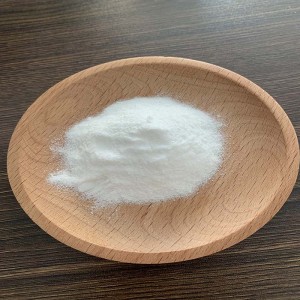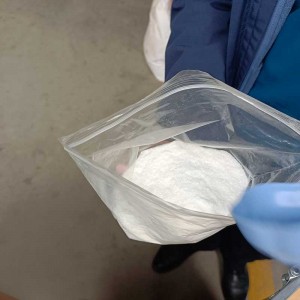
products
Tetracaine hydrochloride
Product details
MF: C15H25ClN2O2
MW: 300.82
CAS: 136-47-0
1.Tetracaine hydrochloride is a highly effective local anesthetic that can block nerve function reversibly. It is used in infiltration anesthesia, nerve block anesthesia, epidural anesthesia, etc. compared with procaine, its local anesthesia effect is significant, and has been widely used in clinic. Through studying the existing synthesis routes, it is found that the synthesis of intermediate p-butylamino benzoic acid is the key step in the synthesis of tetracaine hydrochloride, which has the shortcomings of unstable raw materials or low yield. Scientists have improved this. In 1981, they proposed to synthesize p-butylamino benzoic acid by alkylating p-aminobenzoic acid with 1-Bromobutane. However, due to the inevitable formation of by-products of dibutylation and the unstable nature of raw materials, this route is not suitable for industrial production.
2.Tetracaine hydrochloride is used for mucosal surface anesthesia, conduction anesthesia, epidural anesthesia and subarachnoid anesthesia; Used for ophthalmic surface anesthesia, it does not constrict blood vessels, does not damage corneal epithelium, and does not increase intraocular pressure.
3.This drug can enhance the nerve block effect of cisatracurium, and the dosage of the latter should be reduced when combined. When combined with adrenaline, it can constrict blood vessels, reduce blood flow, slow drug absorption, and prolong the duration of action. But the combination of the two is not suitable for patients with heart disease, hypertension, hyperthyroidism, peripheral vascular disease and so on. Hyaluronidase can effectively increase the diffusion of this drug, accelerate the onset of anesthesia, reduce local swelling, and prevent the formation of hematoma. However, hyaluronidase can also speed up the absorption of this drug, resulting in the increase of anti chemical Book toxicity of this drug. This drug is a derivative of p-aminobenzoic acid (PABA). Sulfonamides exert antibacterial effect by inhibiting the PABA of bacteria. When this drug is combined with sulfonamides, the antibacterial effect of the latter will be inhibited, so the two should not be combined. This medicine is acidic and should not be mixed with alkaline liquid medicine; Even acidic drugs can affect the dissociation value of the drug due to different pH, resulting in reduced action or delayed onset time. Iodine preparation can cause precipitation of this drug, so the injection site of this drug cannot be used.
Application
This product is a long-acting ester local anesthetic. Its action characteristics are: strong penetration to mucosa, suitable for surface anesthesia, and no adverse reactions such as vasoconstriction, mydriasis, corneal injury after eye drops. It is commonly used in ophthalmology. The local anesthetic effect and toxicity are about 10 times greater than procaine. After injection, the anesthetic effect of chemicalbook appears slowly (about 10 minutes), and the metabolism is also slow after absorption. The local anesthesia time is up to 3ij, h, -j. about. It is mainly used for surface anesthesia of eye, nose and throat mucosa, and rarely used for conduction anesthesia and epidural anesthesia. Generally, it is not used for infiltration anesthesia due to its high toxicity.
















